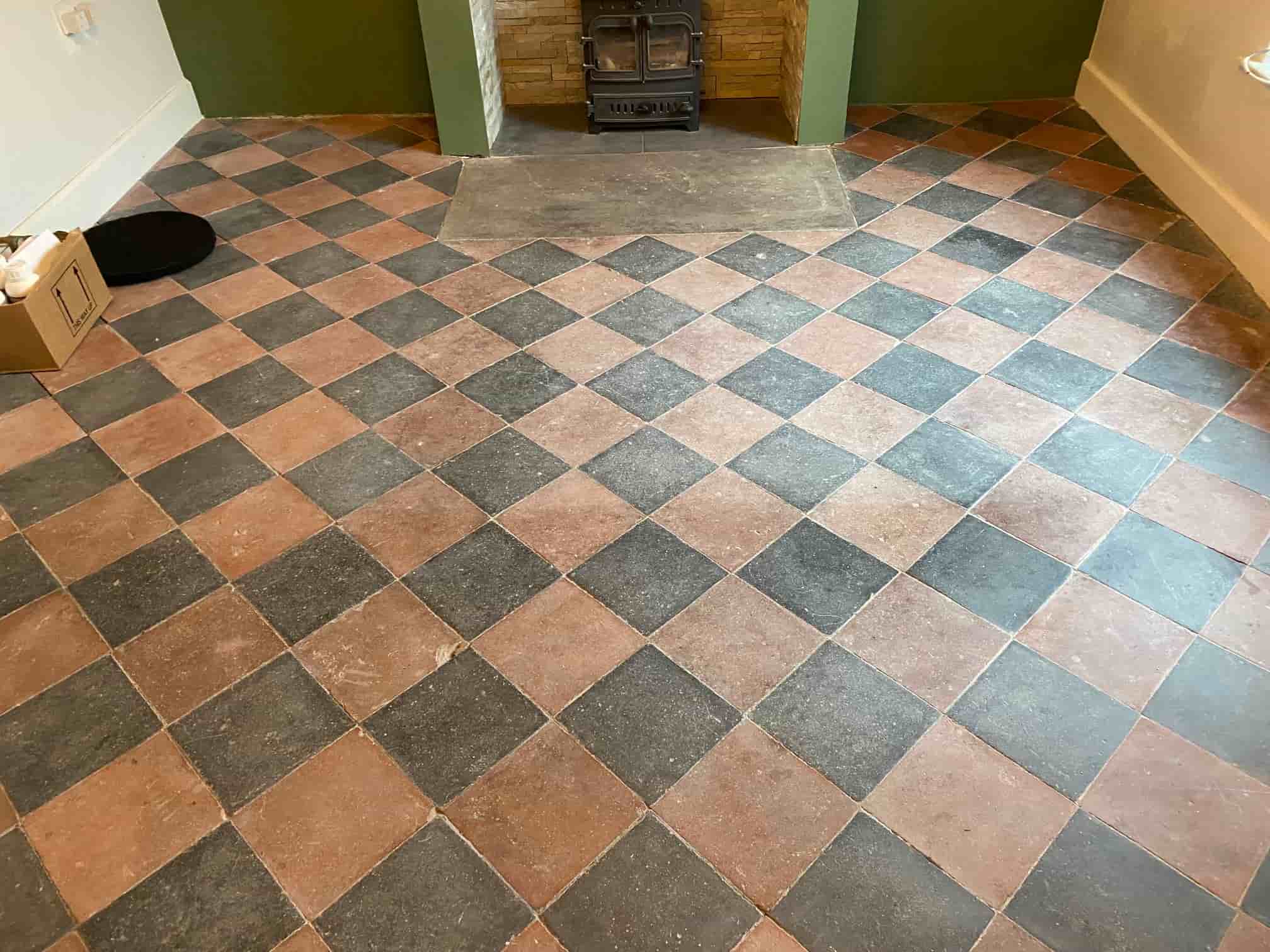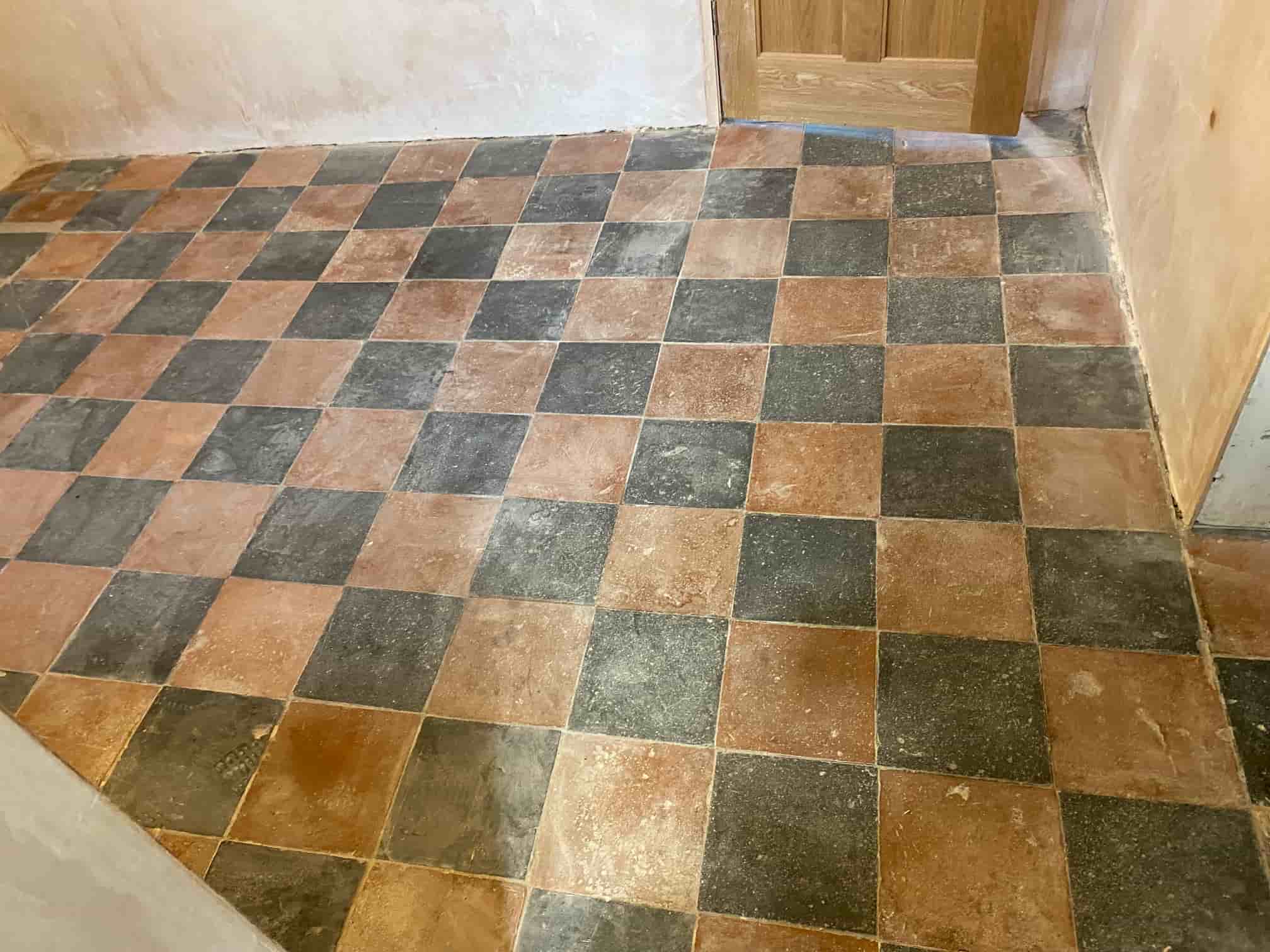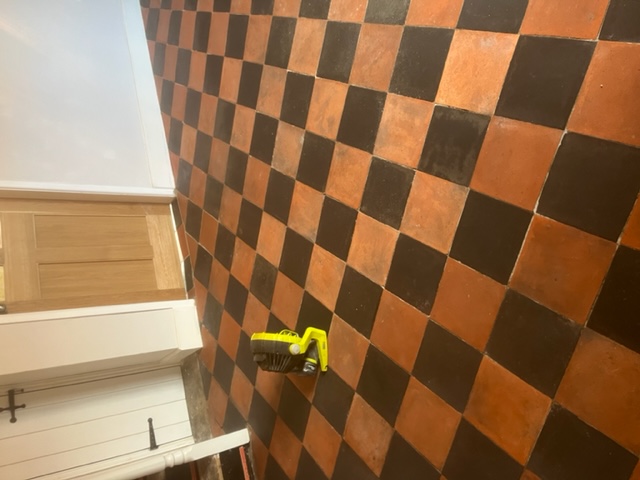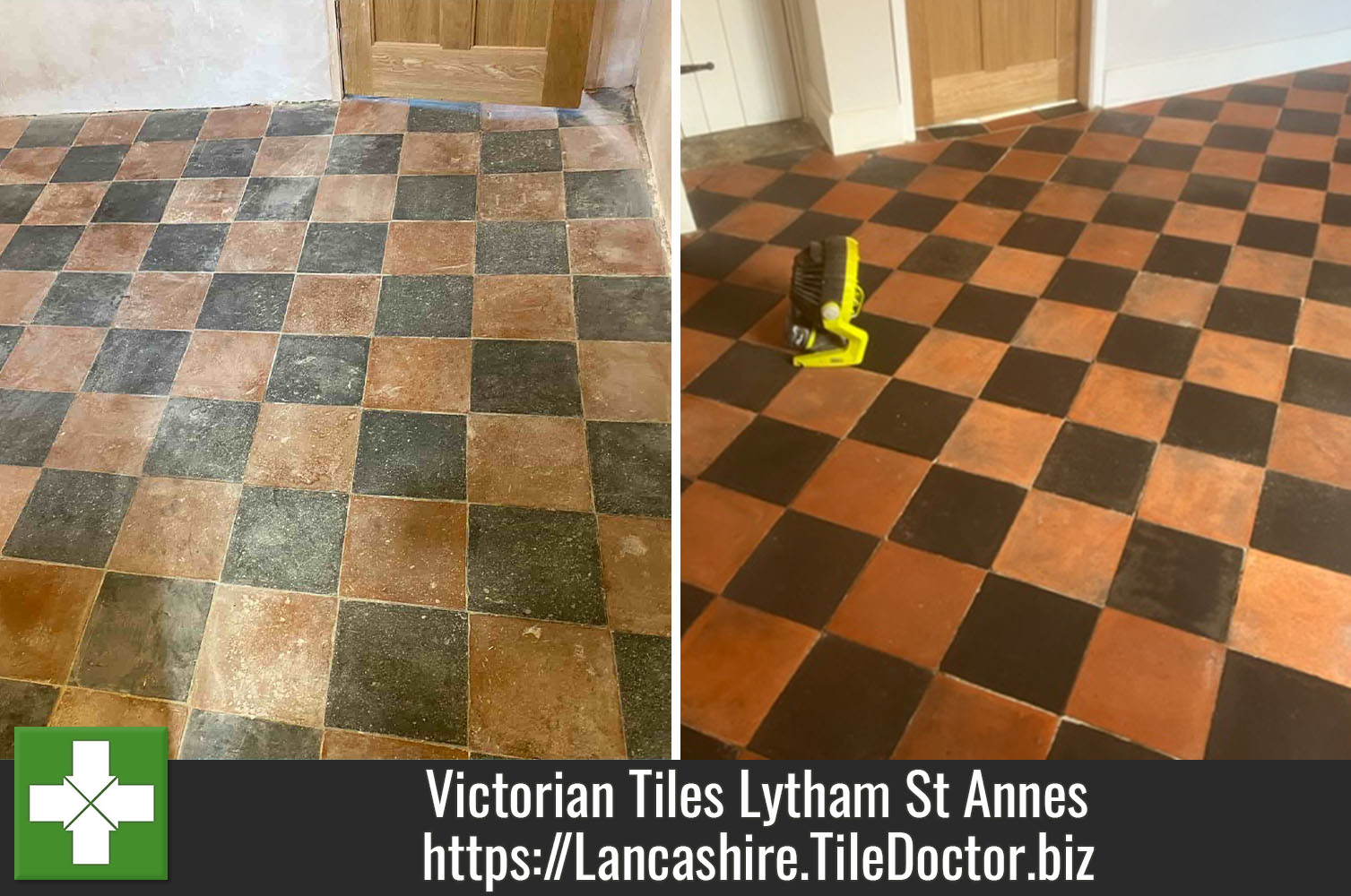Low Moisture Cleaning Products used to Renovate Vintage Victorian Flooring in Lytham St Annes Lancashire
This property in Lytham St Annes had a large area of Black and Red Victorian floor tiles in the front room, dining room and scullery. The building dates to 1870, so the floor is likely to be over 150 years old which is a true testament to how well Victorian’s made and constructed materials even with the most basic of methods compared to modern times.

After inspecting the floor, I could see some of the tiles had characterful chips and marks in them, in fact none of them were perfect but I was confident they would still respond well to a deep clean and fresh seal. Having agreed a price and having discussed sealer options a date was scheduled for the work to commence.

Cleaning a Victorian Tiled Scullery, Front and Dining Room Floor
I was wary that such an old floor as this would not have a damp proof membrane and because of the sandy nature of Lytham’s geology I suspect was laid directly onto a sand base. Using a lot of water on a floor like this can result in long drying times and could exacerbate efflorescence issues. I therefore opted for a low moisture cleaning method that uses gel-based products.
To start we applied neat Tile Doctor Oxy-Gel which is an alkaline cleaning product safe for use on tile and grout. After being scrubbed into each tile with a black pad fitted to a rotary machine the soiling was then removed using a wet vacuum. It’s necessary to add a little water at this point as it makes extraction with the vacuum easier.
Once done the process was quickly repeated using Tile Doctor Acid Gel to give the floor an acid rinse. This process serves to clean up the floor further, removing old grout smears and countering alkaline salts latent in the tile that may lead to efflorescence later. Using an acid-based product at this point also neutralises the ph level of the floor following the use of an alkaline cleaner earlier.
The floor was then left to dry off overnight and went through the sealing options with the client, these particular tiles were laid directly on a sand base which was quite common back in the 1800s in Lytham as it’s just a bed of sand in that area of the country.
Sealing a Victorian Tiled Scullery, Front and Dining Room Floor
The next day we called back to seal the tiles and started by taking several moisture readings across the floors using a damp meter. The low moisture cleaning system method had worked and all the readings were with tolerance.
Three coats of Tile Doctor Colour Grow were then applied to the tiles allowing approximately thirty minutes between coats. Colour Grow was ideal for these tiles as its fully breathable and with a built-on colour enhancer it helped the red and black tiles stand out. A fully breathable sealer is necessary for a floor without a damp proof membrane as it will allow moisture from the sub floor to rise through the tile and evaporate at the surface, using a non-breathable product will result in moisture building up under the floor until it reaches out the walls potentially leading to rising damp.

The floor was transformed by our efforts and before leaving I recommended that for regular cleaning, they use a ph neutral cleaning product such as Tile Doctor Neutral Cleaner, many of the tile cleaning products you find in supermarkets today are bleach based and simply too strong for the sealer.

Source: Victorian Tile Renovation and Restoration Service in Lancashire
